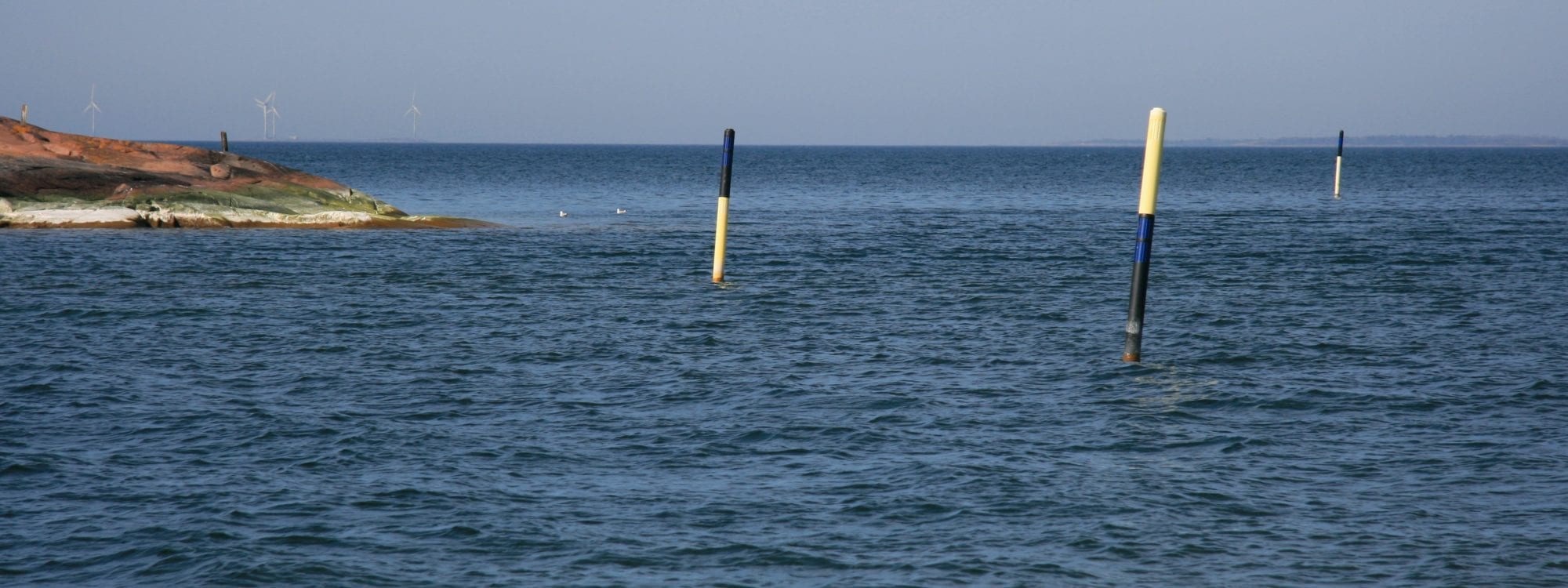Underwater light dynamics
Underwater solar radiation enables aquatic primary production, and the spatio-temporal variation of its occurrence is an important environmental variable. Although the portion of solar radiation that is referred to as visible light penetrates water, it is restricted to a limited surface water layer because of efficient absorption and scattering. Based on the varying content of optical constituents in the water, the efficiency of light attenuation changes in many dimensions and over various spatial and temporal scales. Our research group has studied the underwater light dynamics in the Baltic Sea coastal waters, most intensively in the transitional coastal archipelago of south-western Finland. While the area has long been known to have a highly variable underwater light field, quantified knowledge on the phenomenon has been scarce, patchy, or non-existent.
In all studies, the geographical perspective is highly present as the focus has been on investigating the multidimensionality of underwater light dynamics. Our group has instruments to measure the visible wavelengths of solar radiation (photosynthetically active radiation, PAR). We utilise an underwater spherical quantum sensor that measures the scalar irradiance of PAR range from nearly all directions, making it especially suitable for photosynthesis studies. The group has focused on quantifying the lower limit of the euphotic layer, which refers to the illuminated surface water layer where photosynthetic activity mostly occurs. This so-called euphotic depth varies in both time and space, and these changes are important for photosynthesizing underwater organisms, as the light availability is often the limiting factor in underwater environment. We have also quantified the relationship between euphotic depth and Secchi depth. The latter is commonly assessed estimate for water transparency that is measured by lowering a white disc in water. The group has interest to widen the research activities to include also measurements of UV-B.
Research examples
Luhtala, H., Tolvanen, H. and Kalliola, R. (2013). Annual spatio-temporal variation of the euphotic depth in the SW-Finnish archipelago, Baltic Sea. Oceanologia, 55(2), pp.359-373. DOI.
Abstract:
We measured depth profiles of underwater PAR (photosynthetically active radiation) together with optically derived turbidity and chlorophyll fluorescence values at 11 sampling stations in the South-West Finnish archipelago of the Baltic Sea. The data were collected eight times during the spring, summer and early autumn of 2010. The results illustrate complex and multidimensional variations in the euphotic depth, which was subject to fourfold and twofold differences in the geographical and seasonal dimensions respectively. The spatio-temporal inconsistency and non-linearity of the seasonal euphotic depth variation calls for further studies at different spatial and temporal scales.
Luhtala, H. and Tolvanen, H. (2013). Optimizing the Use of Secchi Depth as a Proxy for Euphotic Depth in Coastal Waters: An Empirical Study from the Baltic Sea. ISPRS International Journal of Geo-Information, 2(4), pp.1153-1168. DOI.
Abstract:
Potential zone for photosynthesis in natural waters is restricted to a relatively thin illuminated surface water layer. The thickness of this layer is often indirectly estimated by measuring the depth in which 1% of the photosynthetically active radiation entering the water remains. This depth is referred to as the euphotic depth. A coarser way to evaluate the underwater light penetration is to measure the Secchi depth, which is a visual measure of water transparency. The numerical relationship between these two optical parameters, i.e., conversion coefficient m, varies according to the changes in the optical properties of water, especially in transitional coastal waters. The aim of our study is to assess which is the most suitable criterion to base these coefficients on. We tested nine methods, seven of which were locally calibrated with our own in situ data from the optically heterogeneous Baltic Sea archipelago coast of SW Finland. We managed to significantly improve the accuracy of modeling euphotic depths from Secchi depths by using scalable and locally calibrated methods instead of a single fixed coefficient. The best results were achieved by using methods, either continuous functions or series of constants, which are based on water transparency values.
Tolvanen, H., Suominen, T. and Kalliola, R. (2013). Annual and long-term water transparency variation and the consequent seafloor illumination dynamics in the Baltic Sea archipelago coast of SW Finland. Boreal Environment Research 18(3), pp. 446-458.
Abstract:
The availability of photosynthetically active radiation (PAR) is one of the limiting factors of marine primary production. In coastal waters, the proportions of optical constituents vary, causing changes in water transparency, and consequently the rate of seafloor illumination. We illustrate this phenomenon geographically in seasonal and long-term perspectives on the archipelago coast of SW Finland in the Baltic Sea, using data from 21 Secchi measurement stations. The results indicate vast spatial and temporal variation of the proportion of illuminated seafloor area, which, in this study, is defined as the seafloor above the estimated euphotic depth (where over 1% of the surface PAR remains). The seafloor illumination undergoes an annual cycle, during which a quarter of the studied seafloor area is illuminated only for a part of the growing season. Based on long-term Secchi data, we estimate a 50% decrease in the total illuminated seafloor area from 1930 to 2007.
